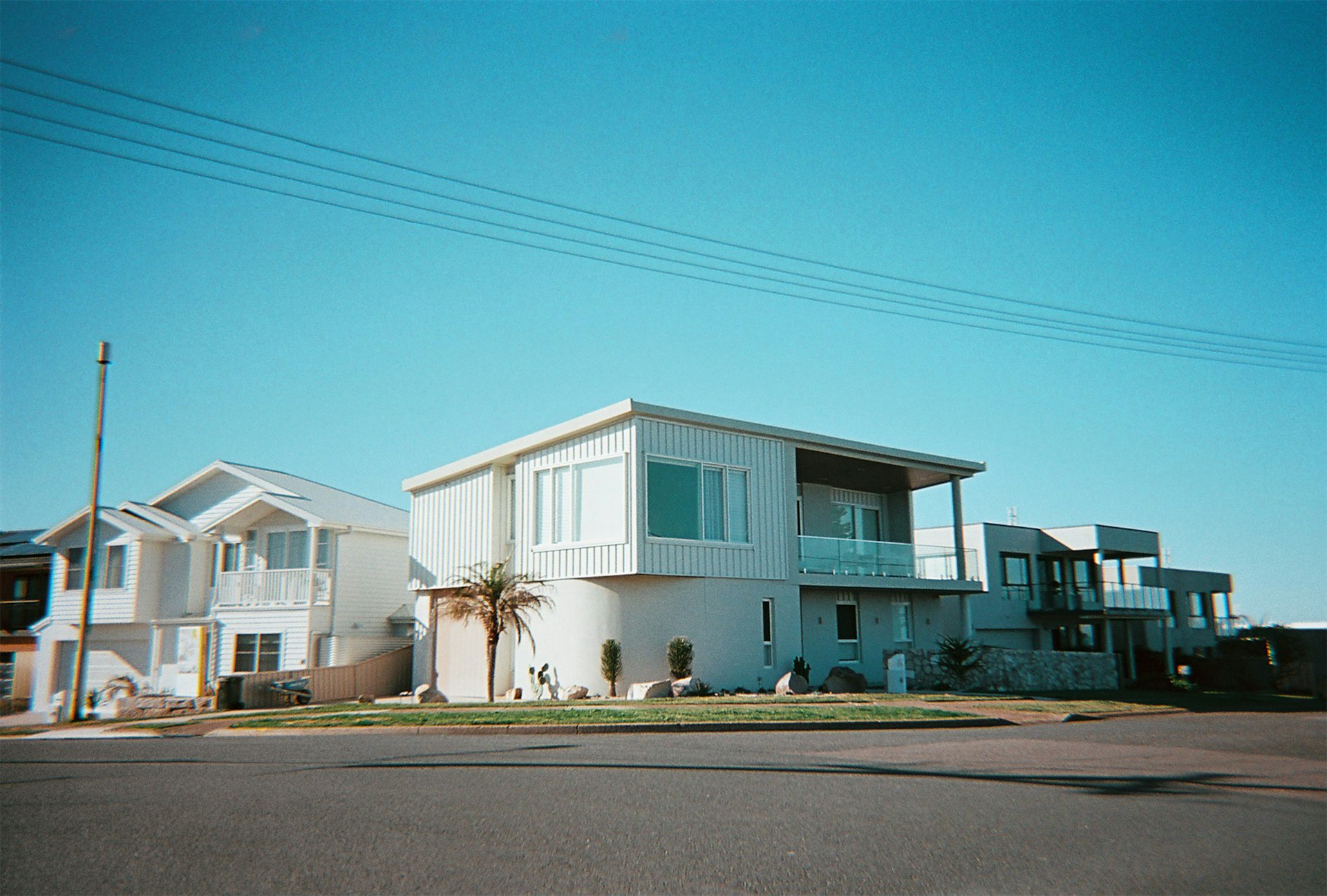2025 Real Estate Photography Trends: Next-Level Visuals for Modern Listings


Photo by Ryan Threadgate on Unsplash
Introduction: The Evolution of Real Estate Photography in 2025
Real estate photography is undergoing rapid change in 2025, driven by technological advances and shifting buyer expectations. Today’s competitive market demands high-quality visuals, interactive experiences, and efficient workflows. Agents and photographers who embrace these trends can attract more leads, close sales faster, and position themselves as industry leaders. This article explores the latest trends, explains how to implement them, and offers actionable guidance for sourcing services and technologies.
AI-Powered Editing Tools: Efficiency and Consistency
Artificial intelligence (AI) is revolutionizing real estate photo editing , making it faster and more accurate than ever. AI tools now automate tasks like sky replacement, virtual staging, and HDR blending, which once required manual effort and specialized skills. For example, platforms such as AgentUp AI Editing and similar solutions allow users to enhance images with just a few clicks, ensuring consistent, high-quality results across listings. [1]
Recent studies indicate that 85% of real estate agents now use AI regularly, citing benefits such as:
- Quicker turnaround on edited photos
- Standardized quality and branding
- Accessibility for photographers of all skill levels
To implement AI photo editing in your business, consider researching platforms like PhotoUp or AgentUp. Compare features such as batch processing, integration with listing platforms, and available editing presets. Many providers offer free trials, so you can test capabilities before committing. If you’re new to AI editing, look for online tutorials or community forums for step-by-step guidance.
Challenges:
Some advanced features may require paid subscriptions or training. It’s possible to start with free versions and upgrade as your needs grow.
Virtual Staging and Augmented Reality (AR): Cost-Effective Property Enhancement
Virtual staging continues to surge in popularity, offering a flexible, affordable way to showcase vacant or under-furnished properties. Digital furniture and decor are added to images, helping buyers imagine themselves living in the space. This approach is often up to 97% cheaper than traditional staging , reducing costs and turnaround time for agents. [1]
Augmented reality (AR) expands on virtual staging by allowing buyers to visualize furniture placement and design elements in real time using their smartphones or AR glasses. Major platforms like Matterport and Insta360 offer tools to create immersive AR experiences. [5]
Practical steps to access virtual staging and AR:
- Contact a reputable virtual staging company. Search for “virtual staging services for real estate” to find top providers.
- Request sample work and compare pricing, turnaround time, and customization options.
- If interested in AR, look for providers offering Matterport or Insta360 integrations and ask about compatibility with your listing platform.
Alternative approach:
For agents wanting hands-on control, some platforms offer DIY virtual staging tools, often accompanied by tutorials and customer support.

Photo by Brett Wharton on Unsplash
360-Degree Virtual Tours: Interactive Property Exploration
Interactive virtual tours and 360-degree imagery are rapidly becoming standard in real estate marketing. By 2025, approximately 22% of home listings include a virtual tour , giving buyers the ability to explore properties remotely and at their own pace. [4]
These tours offer several key benefits:
- Expanded reach-out-of-town buyers can tour homes online
- Higher engagement-buyers spend more time viewing immersive content
- Reduced need for in-person showings-saving time for agents and sellers
How to implement virtual tours:
- Hire a local real estate photographer specializing in 360-degree tours. Search “360 real estate photography + [your city]” for reputable providers.
- Ask about their equipment (e.g., Matterport, Ricoh Theta, Insta360) and editing capabilities.
- Ensure the final tour is compatible with your listing site (e.g., Zillow, Realtor.com).
Challenge:
Virtual tours may require additional investment in technology and training. Some agencies offer bundled packages to simplify adoption.
Drone Photography: Expansive Views and Unique Angles
Drone photography is transforming property marketing with dramatic aerial shots and dynamic interior views. In 2025, 82% of agencies use drones to showcase homes, neighborhoods, and amenities. [4]
Aerial images help buyers understand the property’s layout, lot size, and proximity to local features. Drones are also used for interior fly-throughs, virtual tours, and panoramic videos. [2]
How to access drone photography:
- Search for “drone real estate photography + [your location]” to find licensed providers.
- Verify FAA certification for drone operators, which is required by law in the United States.
- Request sample portfolios and discuss pricing, which typically ranges based on property size and number of images/videos needed.
Alternative:
Some real estate photographers offer drone services as part of bundled packages. Compare offers for the best value.
Short-Form Video Content: Engaging Buyers on Social Platforms
Short videos are gaining traction as buyers increasingly rely on platforms like Instagram, TikTok, and Facebook Reels for property discovery. Although only 10% of agents currently use video , adoption is rising as social media becomes central to real estate marketing. [4] [3]
Short walkthroughs, highlight reels, and lifestyle clips create emotional connections and help buyers “feel” the space before visiting. Effective videos often feature smooth camera movements, natural lighting, and concise narration.
Implementation steps:
- Partner with a photographer or videographer skilled in real estate short-form video production.
- Develop a content calendar aligned with your listing schedule.
- Share videos on your agency’s social media channels and embed them in property listings.
Alternative:
Agents can learn basic video skills using smartphones, gimbals, and editing apps, gradually building their capabilities.
Adopting Advanced Cameras and Intelligent Lighting
Modern cameras and lenses now deliver sharper, more vibrant images, capturing homes in stunning detail. Intelligent lighting systems help photographers achieve ideal balance, whether shooting indoor or outdoor scenes. [2]
High dynamic range (HDR) techniques and smart flash systems make each shot more inviting, increasing listing appeal and buyer interest.
To access these benefits:
- Hire photographers who invest in the latest equipment-ask for lists of gear and sample shots.
- If self-shooting, research online courses covering camera settings, HDR blending, and lighting techniques.
Challenge:
Upgrading equipment requires capital. Many professional photographers offer competitive rates that offset the need for direct investment.
How to Find and Choose Leading Real Estate Photography Services
When seeking real estate photography services for your listings, consider the following steps:
- Search for “real estate photography services + [your location]” on Google to find vetted providers.
- Check online reviews, portfolios, and client testimonials.
- Request quotes for packages including AI editing, virtual staging, drone shots, and video.
- Verify professional credentials and industry certifications.
- Ask about turnaround times, revision policies, and integration with your listing platform.
If you prefer to DIY, explore online tools and tutorials offered by industry leaders. Many platforms provide free resources to help agents and photographers keep up with the latest trends.
Summary and Key Takeaways
2025’s real estate photography trends are centered on technology, interactivity, and efficiency. AI-powered editing, virtual staging, 360-degree tours, drone photography, short videos, and advanced equipment can help you create visually compelling listings that stand out in a crowded market.
To access these services, use detailed online searches, verify providers’ credentials, and request comprehensive packages. Consider learning basic photography and video skills to supplement professional work.
By staying current with these trends, agents and photographers can boost buyer engagement, streamline workflows, and generate more leads-ultimately driving faster sales and higher satisfaction.
References
- [1] PhotoUp (2025). Real Estate Photography Trends in 2025: What You Need to Know.
- [2] Styldod (2025). 7 Real Estate Photography Trends for 2025 You Need to Know.
- [3] BeatColor (2025). Real Estate Photographer: A Modern Guide for 2025.
- [4] Matterport (2025). Key Real Estate Photography Statistics to Know in 2025.
- [5] Cole Connor (2025). The Future of Real Estate Photo & Video – Are You Ready For 2025?






